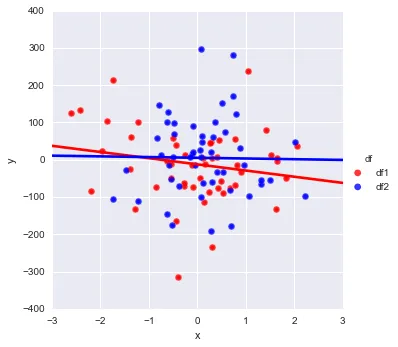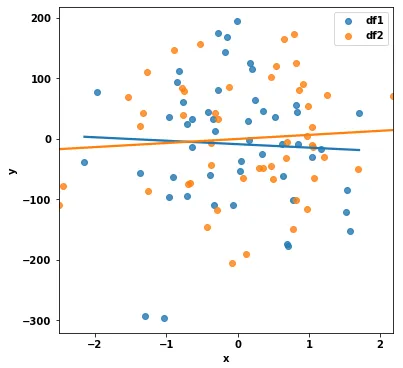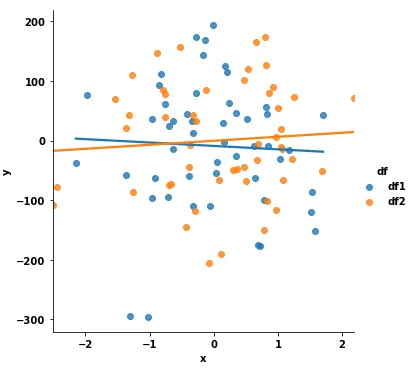鉴于以下内容:
import numpy as np
import pandas as pd
import seaborn as sns
np.random.seed(365)
x1 = np.random.randn(50)
y1 = np.random.randn(50) * 100
x2 = np.random.randn(50)
y2 = np.random.randn(50) * 100
df1 = pd.DataFrame({'x1':x1, 'y1': y1})
df2 = pd.DataFrame({'x2':x2, 'y2': y2})
sns.lmplot('x1', 'y1', df1, fit_reg=True, ci = None)
sns.lmplot('x2', 'y2', df2, fit_reg=True, ci = None)
这将创建两个单独的绘图。我如何将 df2 的数据添加到同一张图表中?所有我在网上找到的 seaborn 示例似乎都集中于如何创建相邻的图形(例如,通过“hue”和“col_wrap”选项)。另外,我不想使用数据集示例,因为这在我们项目中没有自然意义。
如果需要混合使用 matplotlib/seaborn 函数来实现这一点,我会很感激有人能帮助说明。


